Hi all,
There's a lot of misinformation out there about diners (the food establishments) being made out of old railway cars or trolleys. One area that underscores this confusion is the numerous 0-scale models of "diners" that are converted RR cars. The facts are that "true" diners were buildings constructed as a portable architecture form. Just like railroads, these eateries reflected the designs and fashions of the times. Thus, you find barrel and monitor roofs with clerestories, stainless steel sides, and "modern" streamliners. And, it didn't hurt that some of these manufacturers made rail cars as well as restaurants (e.g., Brill, Kullman?).
There are always exceptions to every rule and when cities or RRs retired some of their cars, some cooks saw these offerings as an inexpensive way to set up a dining establishment. Diner historians believe that these already old and leaky shells gave "true" diners made by specific manufacturers a bad reputation. There certainly aren't many of these true conversions left, which would seem to support the view that 1. they weren't that common and 2. they were in poor condition to begin with. The last time I paid attention (pre-2011), there were about 12 converted RR cars in the country and about 22 converted trolleys.
Here are photographs of two surviving diners that were created from a RR car and trolley, respectively. Some day, I may scan and post photos of streamliner diners. What a great feature for a layout!
P.S. -- Sorry my scanner does such a poor job on these photos. At least it was free. :-}
Veteran's Square Diner, West Warwick, RI. Late 1800s trolley. Photographed on a Dinerama trip in 2000. We (foodie foamers) didn't get to go inside. A Google hit obtained today says this restaurant began life as a 1911 Osgood Bradley electric trolley, so I guess the date from the tour guide was a bit off.
Milford Diner, Milford, NH. 1910 railroad car. The left-hand side of the diner hangs out over a river gorge, adding to its ... er ... charm. Given that, let's hope this was one of the sturdier retired RR cars. To my moderately trained eye, in 1991 when I visited, the ceiling was the only thing left reminiscent of its original use. According to a Google search today, the diner is now called the Red Arrow Diner and has a metal roof.
Tomlinson Run Railroad




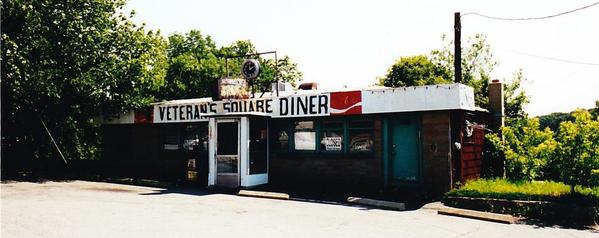
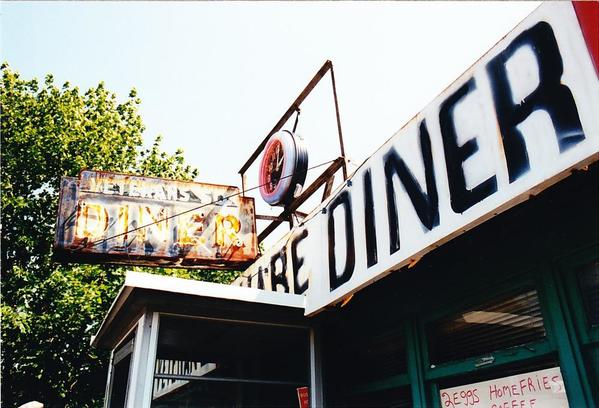
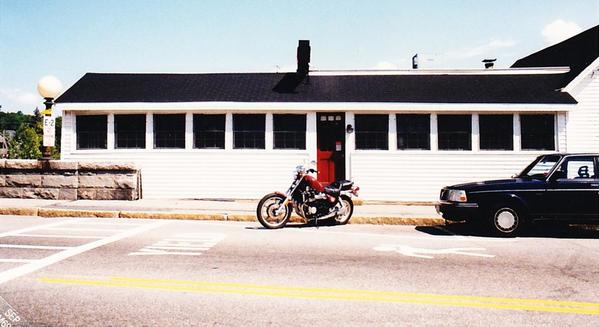
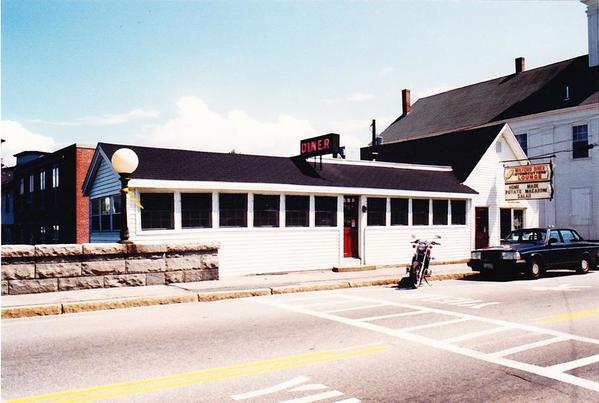




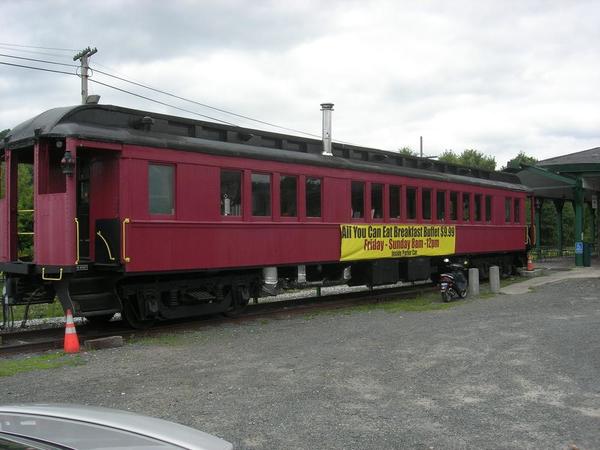
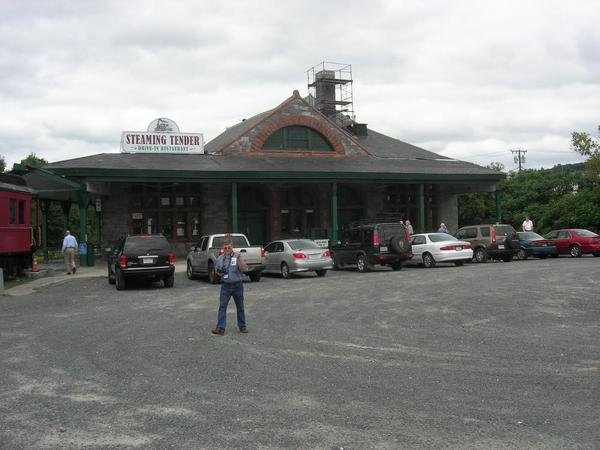
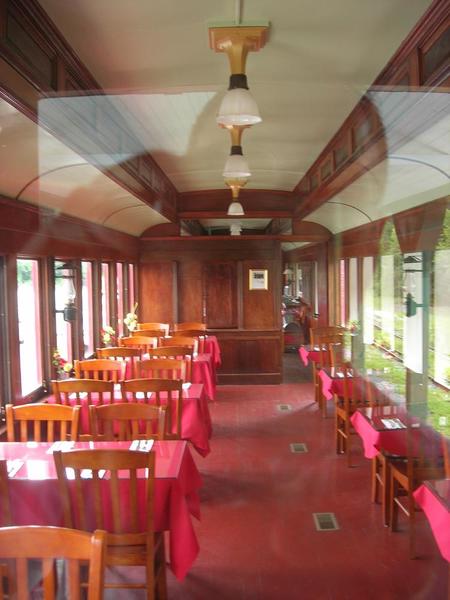



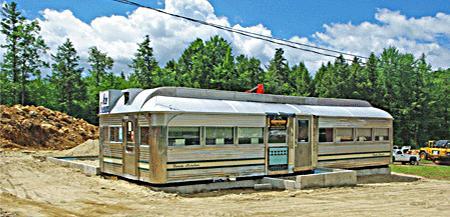

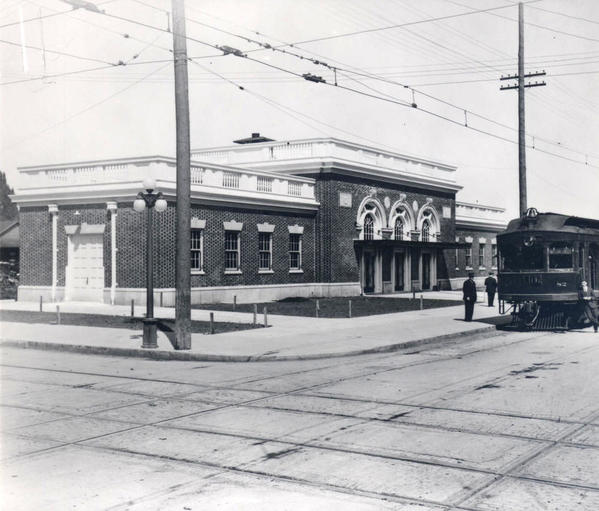
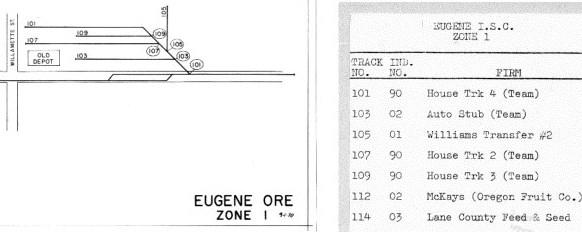
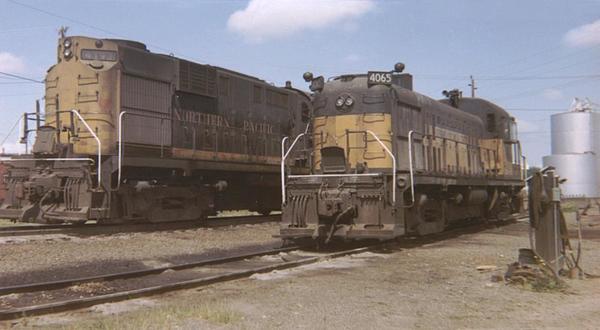

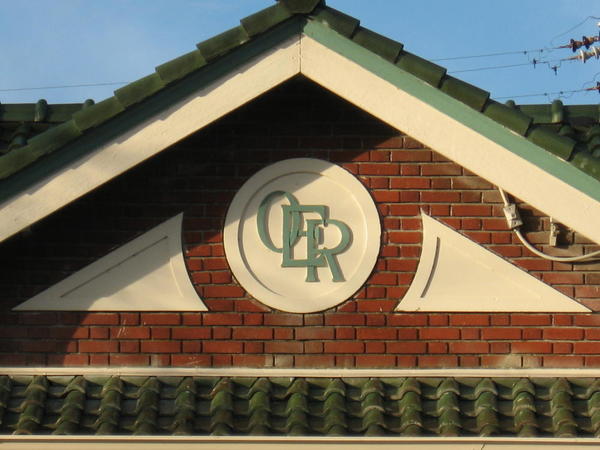


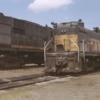
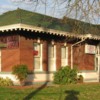
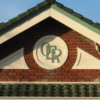

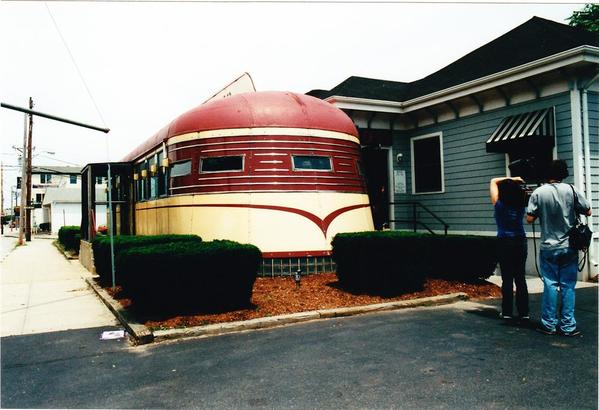
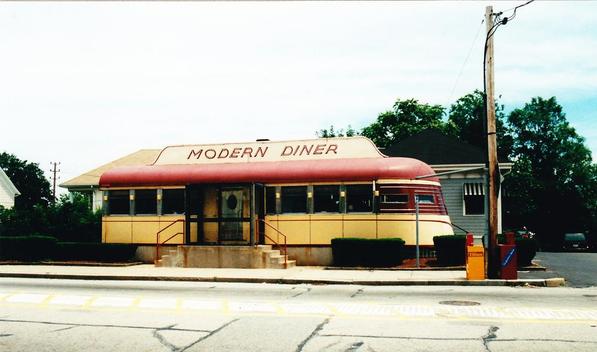
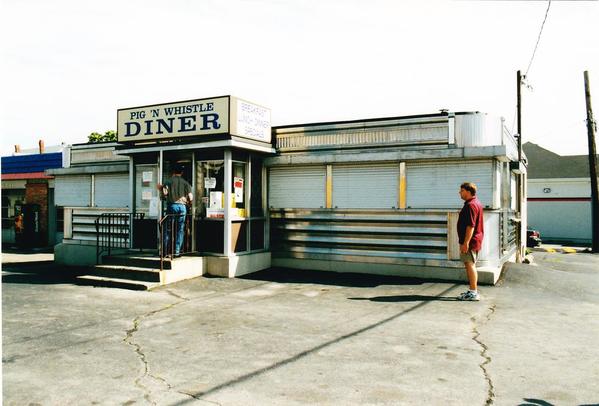
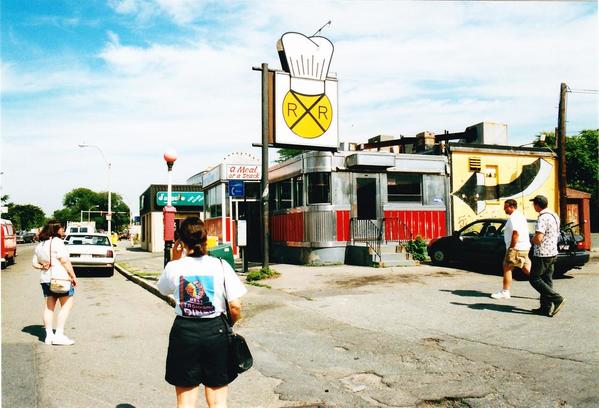
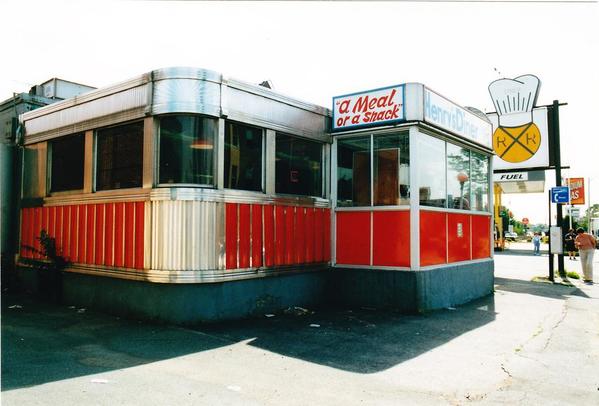
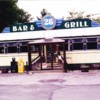





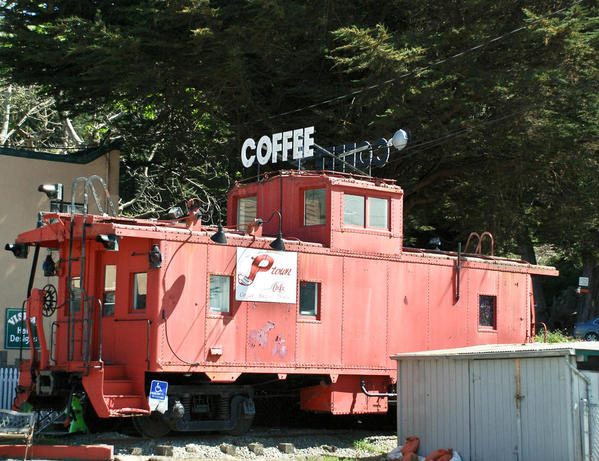
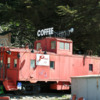













































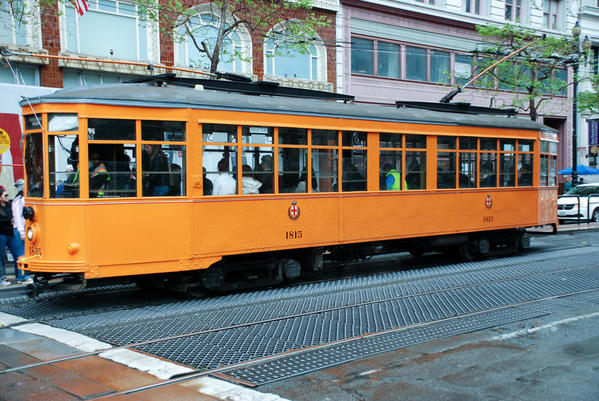
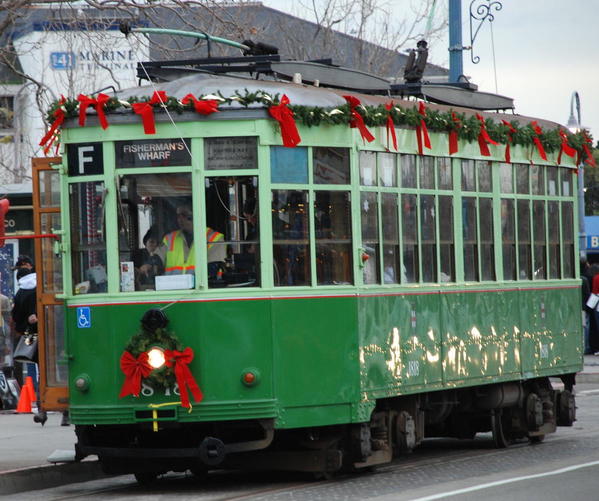
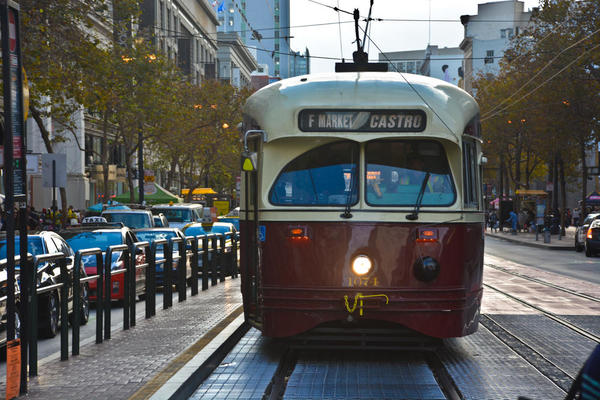
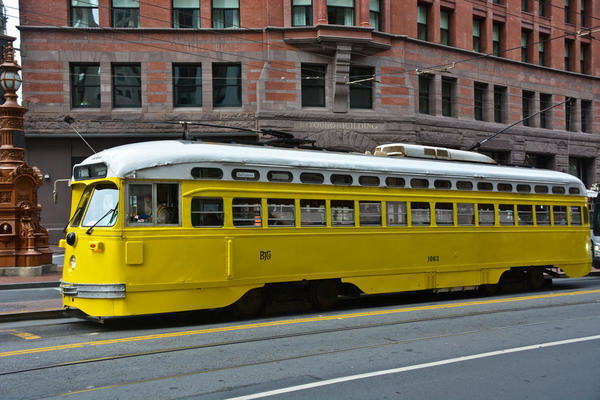
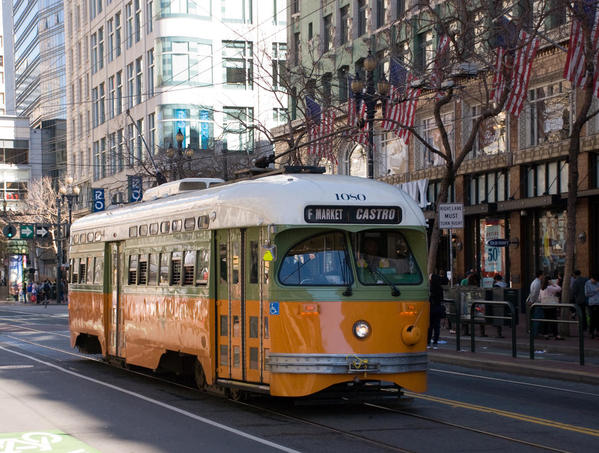
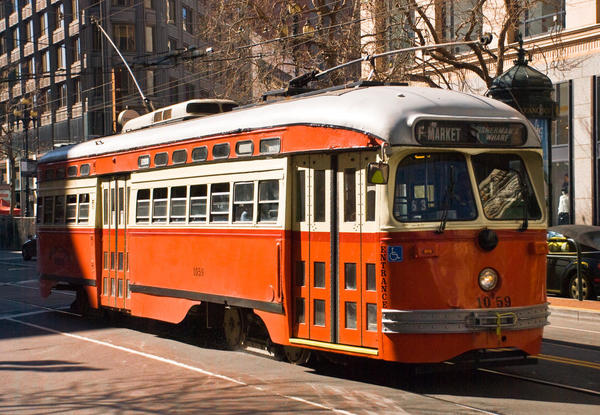
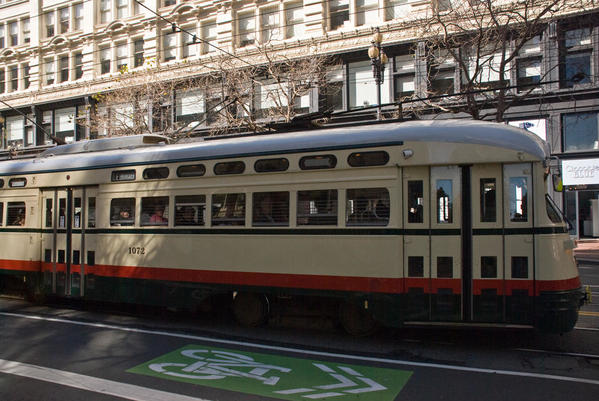
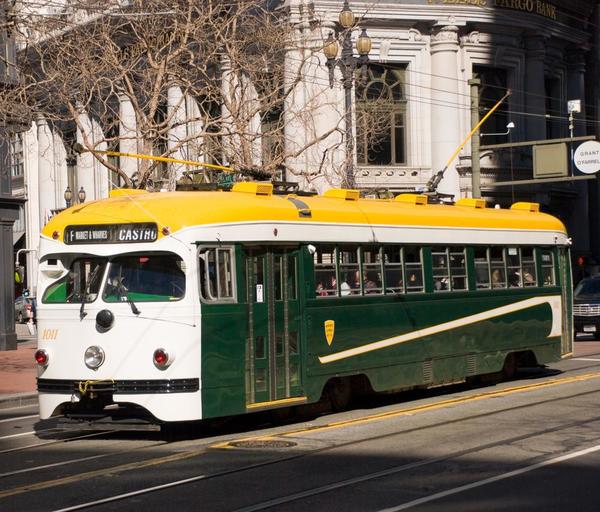
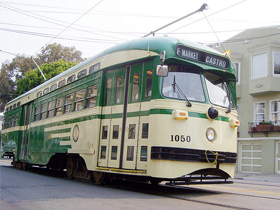

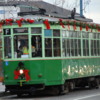
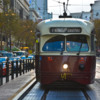
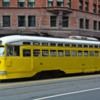
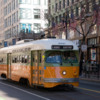

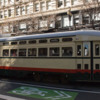
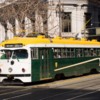
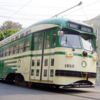












 I especially like the angle of the last one. It captures real movement and those great design lines. It's also neat that the city has included trolleys from around the world, as well as PCCs.
I especially like the angle of the last one. It captures real movement and those great design lines. It's also neat that the city has included trolleys from around the world, as well as PCCs.
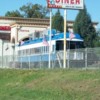





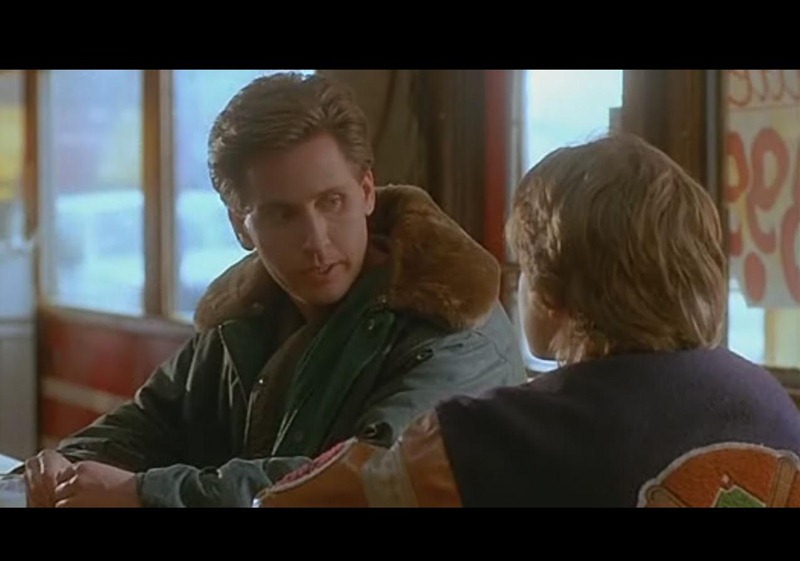
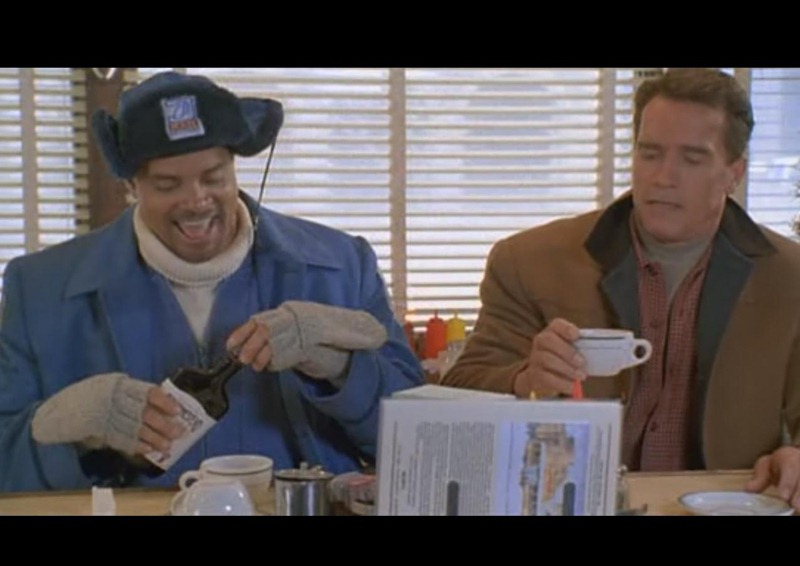
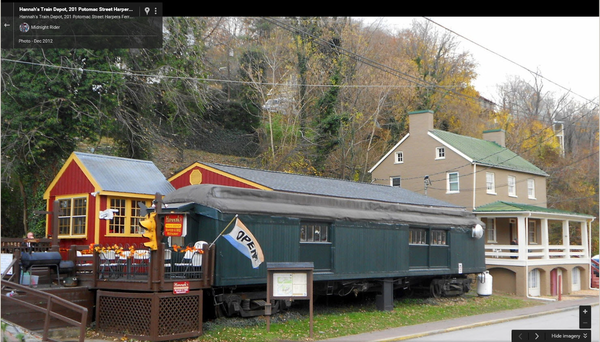



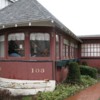







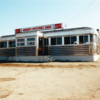









 1940 Fodero diner clock (detail)
1940 Fodero diner clock (detail) PCC car detail
PCC car detail UP engine detail
UP engine detail 1947 Central design element of china for the planned Golden Rocket (detail)
1947 Central design element of china for the planned Golden Rocket (detail)




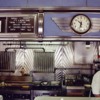


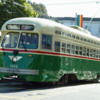









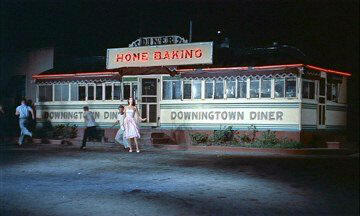













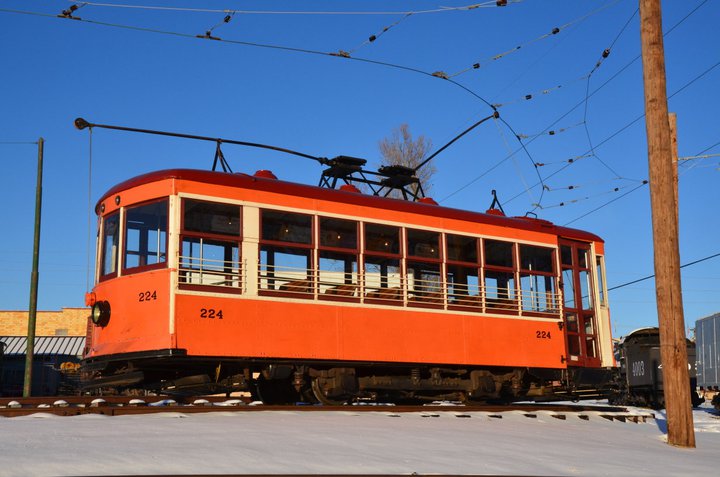
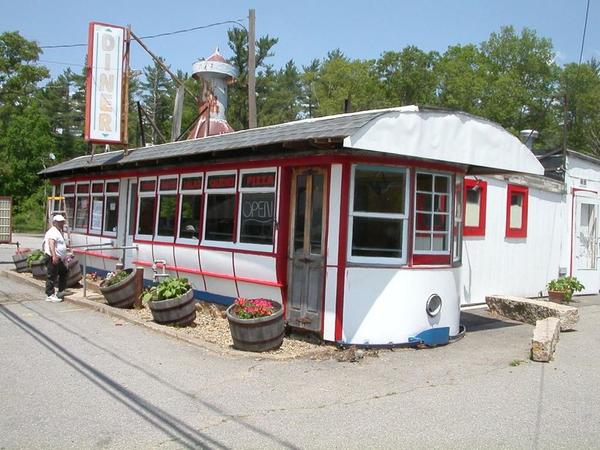
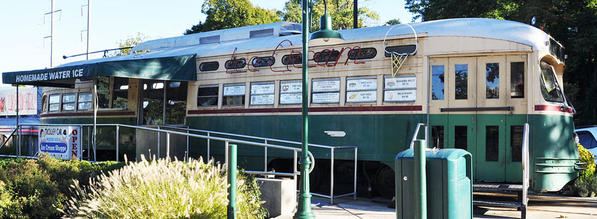

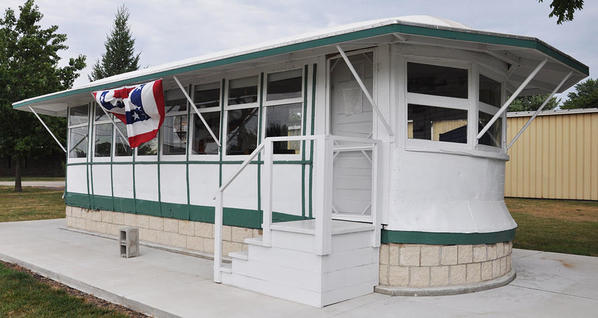
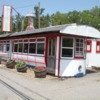
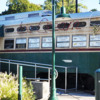
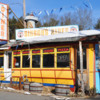





























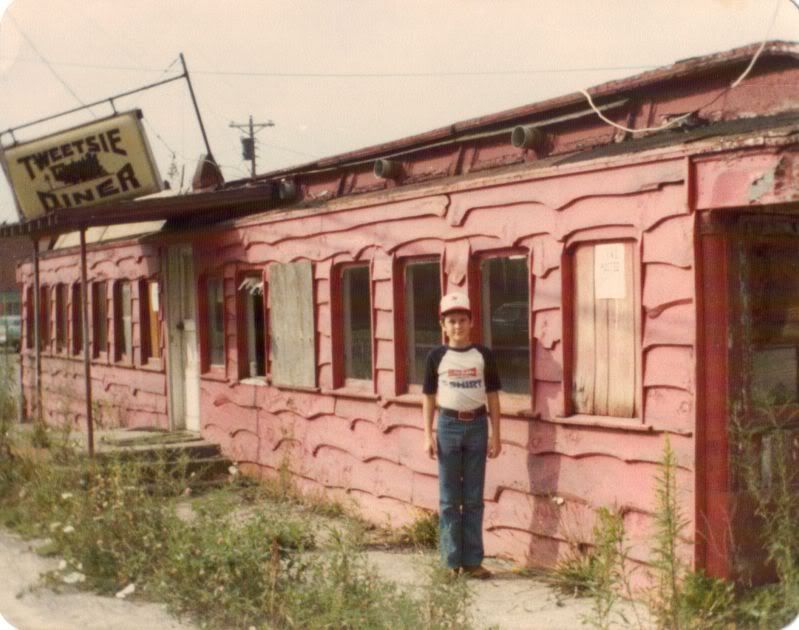
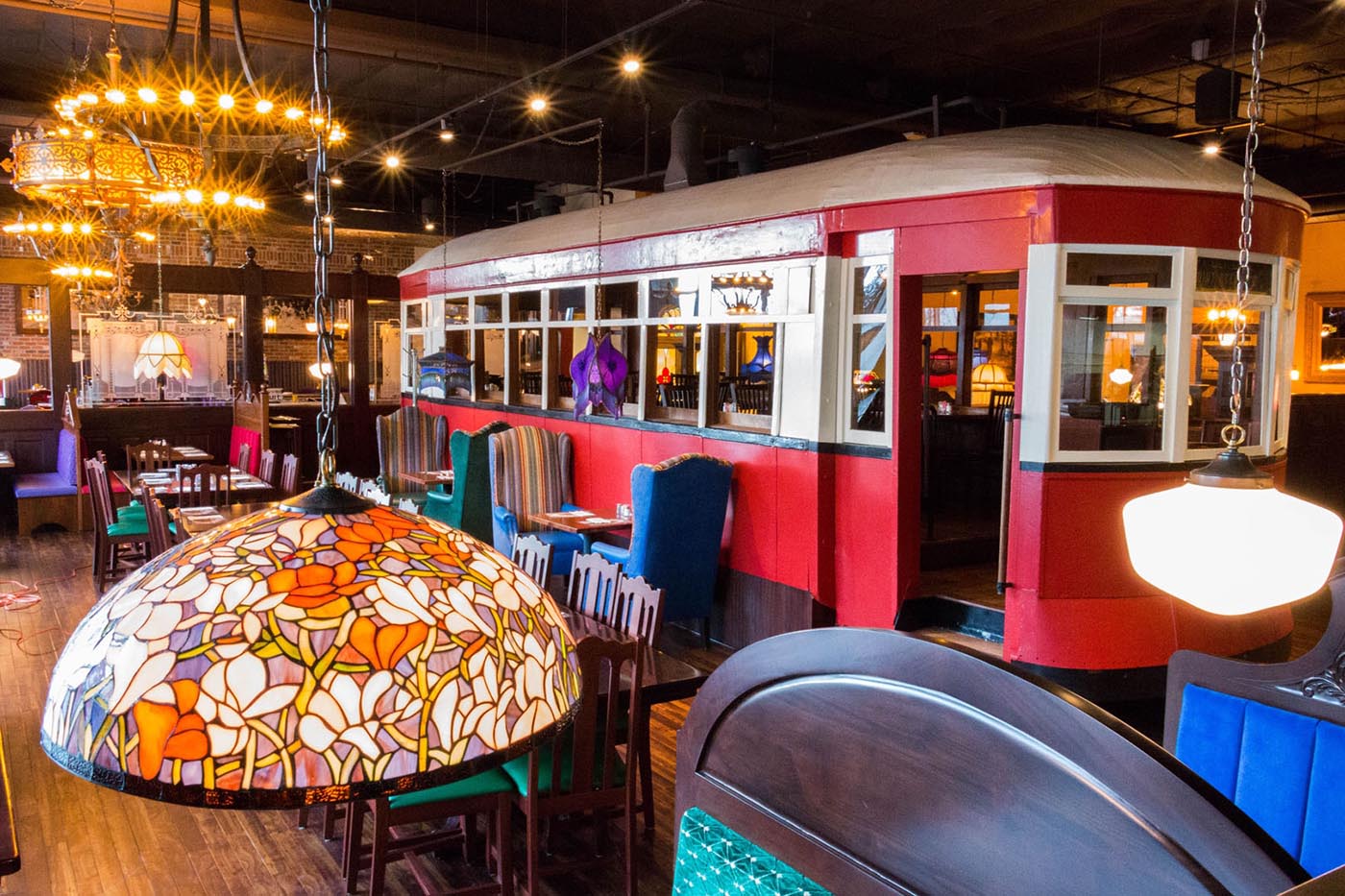
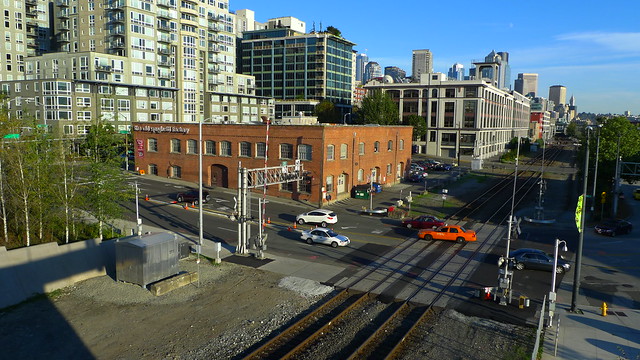

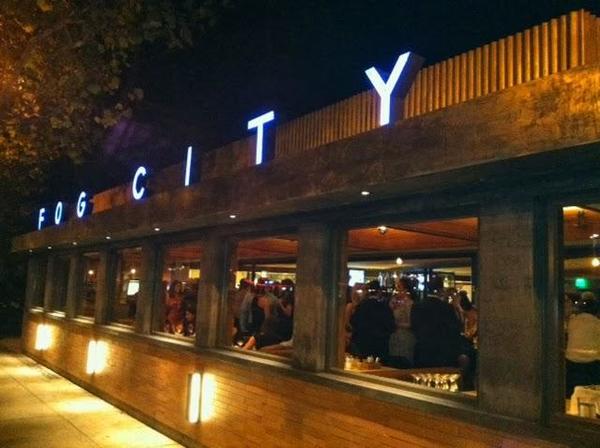

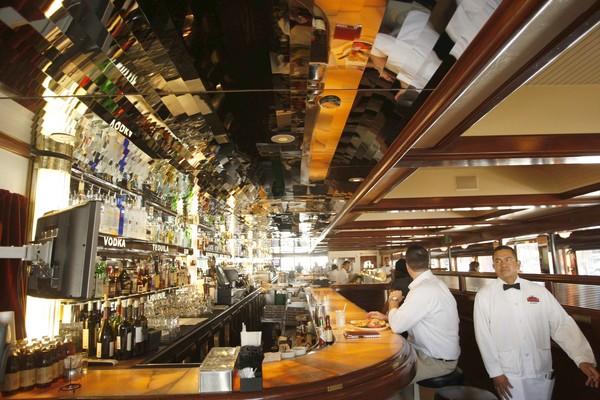
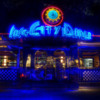























 The Burlington Diner, 4183 SO. Halsted Street, Chicago, IL. (Circa 1940s. Photo courtesy of Illinois Digital Archives). This rail car diner was, as its name suggests, part of the Burlington Route and was located opposite the stock yards. It opened in 1939 and closed in the 1970s. The rail car was placed on land previously owned by the Mrs. O'Leary's boy, "Big Jim", a Chicago gambler. But look closely ... The owner encased the rail car in red and yellow - BRICKS! Sort of a Lou-Roc before there was a Lou-Roc. From a
The Burlington Diner, 4183 SO. Halsted Street, Chicago, IL. (Circa 1940s. Photo courtesy of Illinois Digital Archives). This rail car diner was, as its name suggests, part of the Burlington Route and was located opposite the stock yards. It opened in 1939 and closed in the 1970s. The rail car was placed on land previously owned by the Mrs. O'Leary's boy, "Big Jim", a Chicago gambler. But look closely ... The owner encased the rail car in red and yellow - BRICKS! Sort of a Lou-Roc before there was a Lou-Roc. From a 
























































































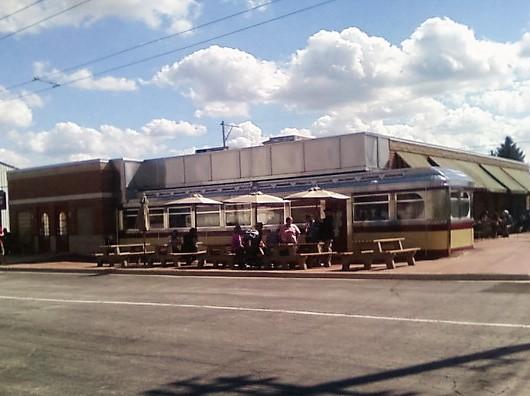




















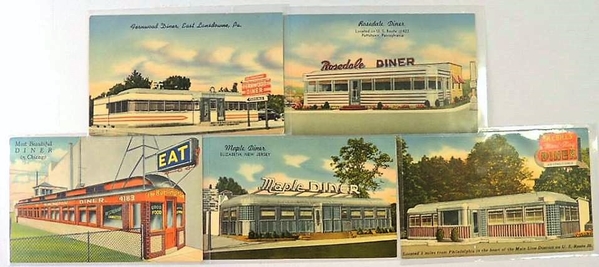








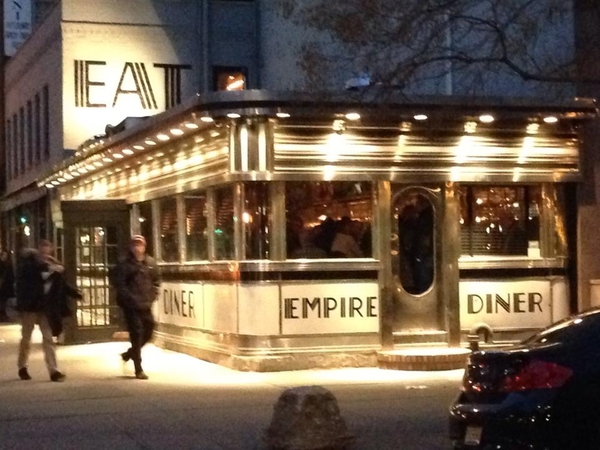

 "Stewardess-Nurse" would be more accurate.
"Stewardess-Nurse" would be more accurate.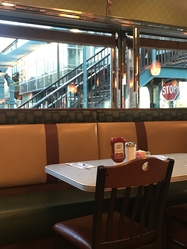













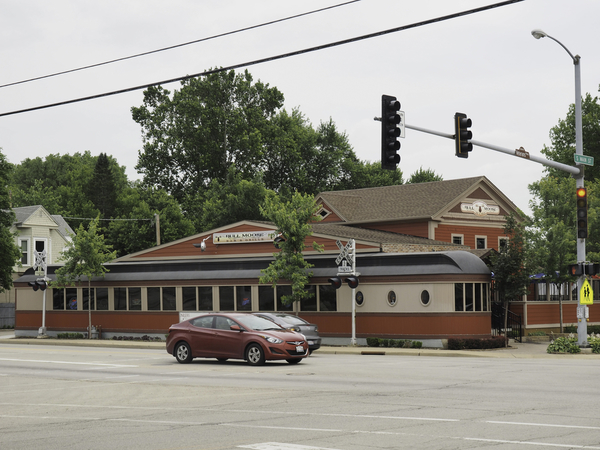
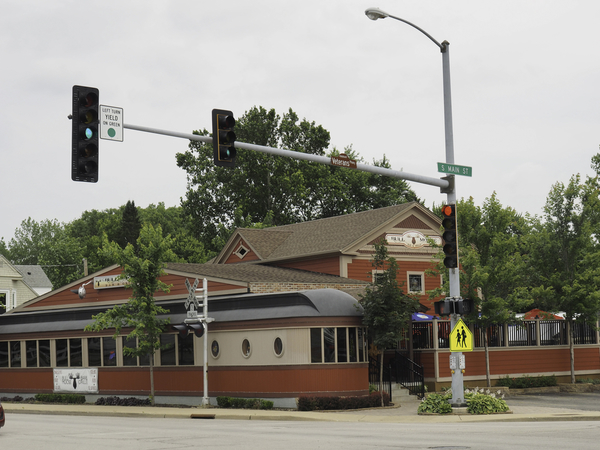





































































 (various web sources)
(various web sources)



























